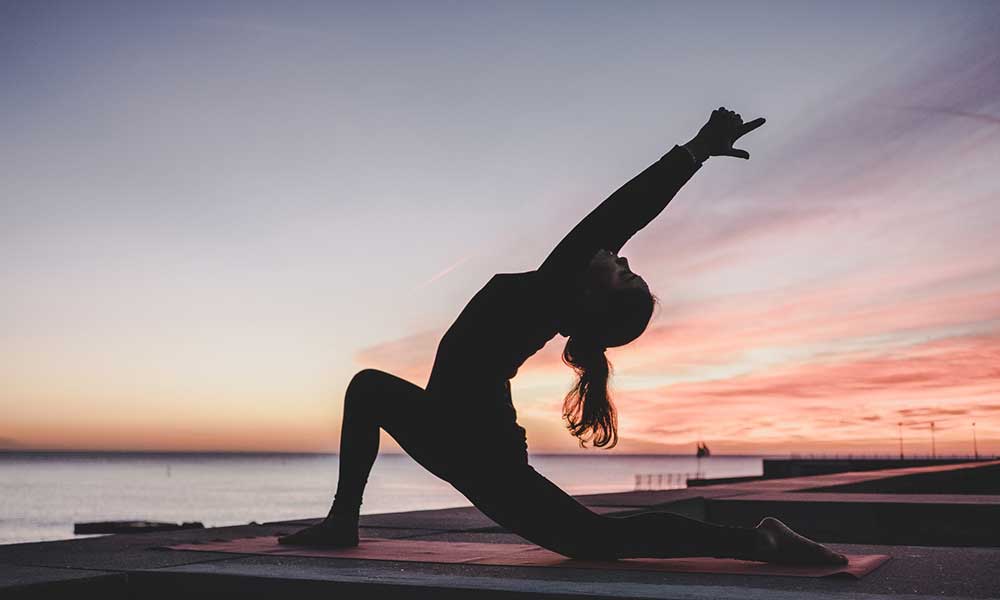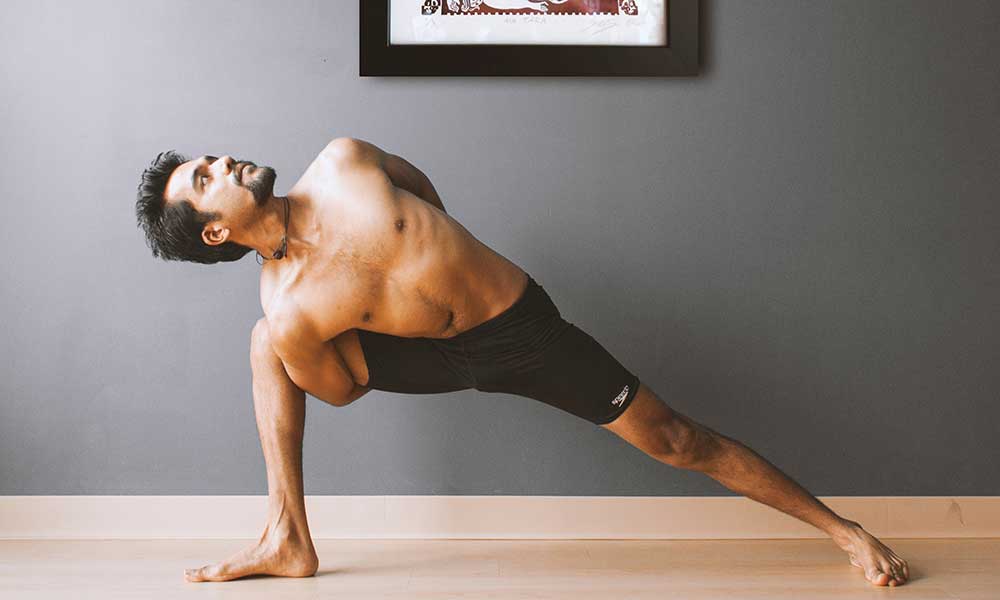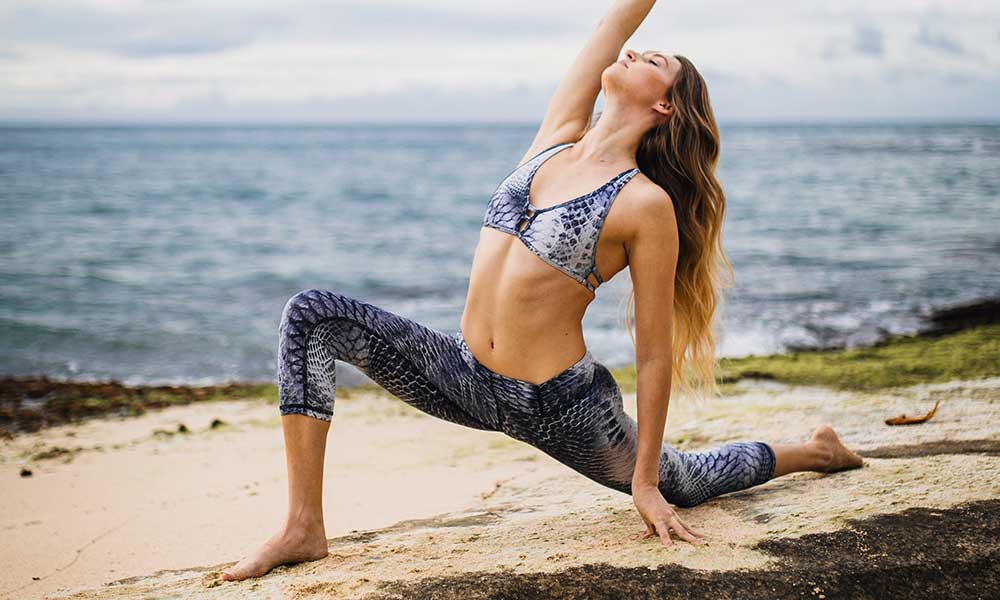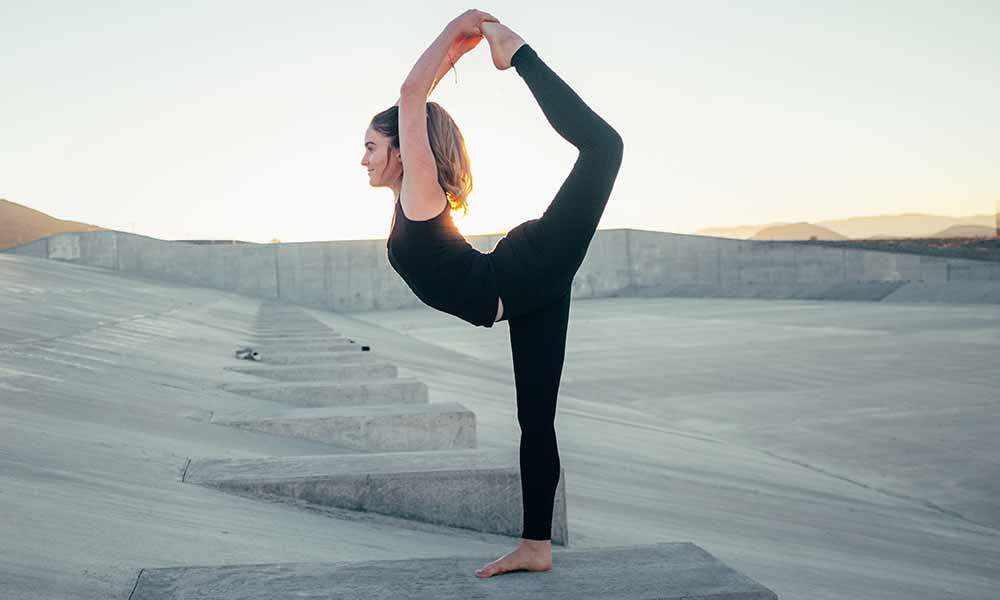Most of us are familiar with the yoga classes that get our heart rate pumping and leave us feeling sweaty and invigorated, otherwise known as “yang” styles of yoga.
Yang styles of yoga would include the fast-paced classes such as vinyasa, power yoga and Ashtanga.
But you may not know much about yang’s tranquil opposite: yin.
This article is dedicated to all things yin, from its health benefits to a general breakdown of this mindful practice.
What Is Yin Yoga?
According to traditional Chinese philosophy, the concept of “yin and yang” is the idea that two contrasting forces can be complementary to one another.
In other words, two things that are opposite are equal in importance.
While yang styles of yoga are primarily focused on your muscle groups, yin yoga focuses on the health of your deep connective tissues, such as ligaments, joints, and bones.
It’s a practice that allows you to plant your attention inward and tune into the sensations you are feeling in your physical and emotional body.
In yin yoga, poses are held for much longer periods of time than they are in other types of yang yoga.
Sitting in a yoga pose for a long period of time allows for deep stretching of certain tissues that we don’t normally use throughout the day, while also giving us the space and time to breathe through any discomfort we might feel.
Both practices are beneficial and applicable to our day-to-day life.
Yin yoga stems from the ancient Chinese philosophies and Taoist principles which teach us that our bodies contain pathways where Qi (energy) runs through our bodies.
By stretching deeply into certain postures, we are allowing for the removal of any blockages so that our energy can move freely.
How To Practice Yin Yoga
One of the best things about this style of yoga is that it is available for you to practice any time and any place.
All you need is a mat and some time to spare!
When practicing yin yoga, the goal is to make sure that you stay in each posture for a longer duration than you would in other types of traditional yoga classes (think two to five minutes, but you can always go for more).
The yoga sequence is going to be a quiet practice consisting of many seated and reclined poses such as butterfly pose, frog pose, twisted dragon, and seated forward folds.
Many of these poses are great for aspiring yogis who have tight hips or want to release tension in the lower spine.
Once you are settled into each pose, do you best to be still. Let yourself relax into the pose as much as possible.
You will want to feel a deep sensation of “comfortable discomfort” but not pain.
As always, this yoga practice calls for you to stay with your breath.
Sometimes holding poses for an extended amount of time can be uncomfortable but focusing on our breath teaches us that we are okay even in moments of discomfort.
In yin yoga, you will want to breathe from your diaphragm, meaning you should be able to feel an expansion in your ribs and belly with every breath.
Yin yoga is the perfect yoga style to use some support from a yoga block.
Blocks can be placed under your knees, under your seat, or under your lower spine to allow you to relax into the postures with ease.
Health Benefits Of Yin Yoga
There are so many health benefits of yin yoga in both the physical and mental aspect.
Here are some of the key health benefits to this delightful practice:
- Lengthens connective tissue: When we don’t use our connective tissue enough, it can become less elastic, causing stiffness and pain throughout our body. Gently stretching them out regularly through yin yoga can relieve this stiffness by lengthening and strengthening them.
- Increases flexibility: The road to becoming more flexible includes elastic fascia and better joint mobility. This can be acquired through yin yoga practice.
- Improves circulation: Yin yoga targets your deeper tissues and ligaments so by breathing into each pose you are inviting oxygen to flow freely, increasing blood flow and circulation.
- Lowers stress levels: There is nothing quite like the calming sensation you feel after a yin yoga class. Research has shown that yin yoga has a markable impact on lowering stress and anxiety levels. This practice also helps to activate your parasympathetic nervous system, putting a halt to your body’s tendency toward the fight-or-flight response.
Who Should Try Yin Yoga?
Yin yoga is perfect for anyone seeking to balance out their physically activity with a practice that is mindful and slow.
If you are someone who does a lot of fast-paced physical activity on a daily basis, you could benefit from the deep stretching and meditation that yin yoga has to offer.
This practice is also ideal for those who are interested in meditation but might not know where to start, as it is definitely a time to focus inward on the mat.
Because this is a restorative practice, people who suffer from conditions like arthritis and osteoporosis could benefit from taking yin yoga as well.
Really, yin yoga is for anyone looking to sit with themselves in meditative postures and do some deep stretches.
What Is Yin Yoga Good For?
Yin yoga is a style of yoga that lengthens and strengthens our connective tissues and teaches us how to breathe through discomfort.
It is beneficial to anyone looking to release tension in the body and experience a relaxing, meditative state.
What Is The Difference Between Yoga And Yin Yoga?
In contrast to yang styles of yoga, yin is a slow-paced, meditative practice that focuses on stretching the joints and bones.
Is Yin Yoga Good For Beginners?
Anyone can practice yin yoga! But just keep in mind that if your body isn’t used to stretching, you’ll want to avoid injury by using supports or modifications.
A slight, “comfortable” discomfort is normal, but try not to force or pressure yourself into anything that causes you serious pain.
What Does Yin Yoga Consist Of?
Yin yoga consists of mostly seated meditation poses and reclining postures. In a single yin yoga class, you might do as little as four or five poses within an hour.
Can You Do Too Much Yin Yoga?
Just like any physical exercise, you must be careful not to overexert yourself. Listen to your body and only do what feels good.
Does Yin Yoga Tone Your Body?
While some types of yoga are great for increasing strength and toning muscles, yin yoga is not the class for this. The purpose of yin yoga is to stretch and be with yourself in a meditative state.
What’s The Difference Between Vinyasa And Yin Yoga?
Vinyasa is a type of Ashtanga yoga, which is focused on strengthening the muscle groups and flowing through a more fast-paced yoga sequence.
Yin yoga is a slow-paced practice that targets your joints and connective tissues.
What’s the difference between hatha and yin yoga?
Hatha yoga is basically just a slower version of vinyasa, which focuses on asanas, pranayamas, and mudras.
Yin yoga is a type of restorative yoga that is not so focused on the physical.







